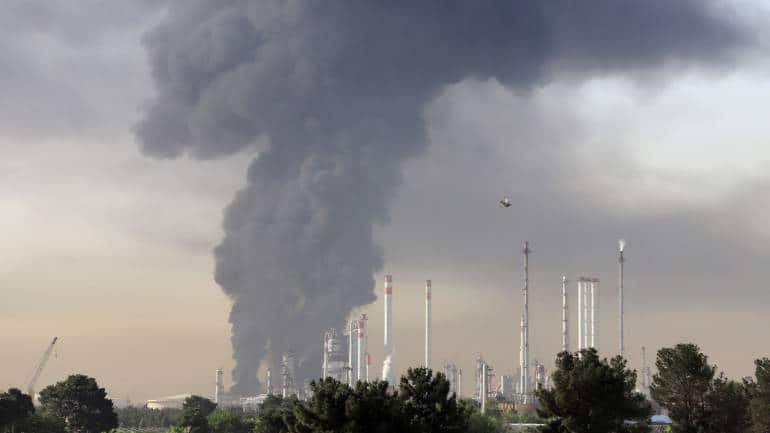
In-Depth | Iran nuclear accord is within reach; will it derail oil price rally, and how will it impact India?

In-Depth | Iran nuclear accord is within reach; will it derail oil price rally, and how will it impact India?
Crude oil prices, after the historic sub-zero plunge in mid-2020, have been steadily recovering over the past 10 months. But the current price rally may be derailed by one imminent geopolitical factor - the revival of the Iran nuclear accord.
Reactivation of the 2015 nuclear deal is a matter of when, and not if, say experts as they weigh in on its potential impact on the global oil prices.
The accord, formally known as Joint Comprehensive Plan of Action (JCPOA), came into effect in January 2016. The sanctions on Iran's several sectors including petrochemicals were lifted on the condition that Tehran would slash its stockpile of low-enriched uranium and reduce its gas centrifuges.
The deal, that was inked between P5+1 (the US, the UK, China, France, Russia and Germany) and Iran, was abrogated after the US unilaterally pulled out in May 2018 and re-imposed crippling sanctions on the Islamic Republic.
Till the end of JCPOA, Iran, which sits on the world's fourth-largest oil reserves, was producing around 2.8 million barrels per day (bpd) of crude oil, and used to be the third-largest producer among OPEC (Organization of Petroleum Exporting Countries).
After the sanctions returned into full effect, Iran was unable to sell its crude in most of the developed and developing economies except for venturing into the grey market. This not only dealt Iran an economic blow,but also hurt its production capacity.
With an oil-producing infrastructure that has aged, and in a global market where the total supply is being tightly capped by OPEC and ally Russia (OPEC+), experts doubt whether any initial impact of Iranian supplies on crude rates can be sustained.
Even if one optimistically expects Iran to soon return to its pre-sanction production level of 2.8 million bpd, it should also be noted that the global demand has shot to nearly 99 million bpd.
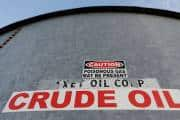
A
number of experts agree that once the nuclear deal is revived, the crude market will face brief volatility, with the rates swinging downward for a short period. Subsequently, the factor that would be influencing the rate would not be the nuclear accord, but the quantum of Iranian supplies and the OPEC+'s limit on cumulative production.
"If the US manages to lift sanctions on Iran, the short term effect may be largely negative for the crude price as it will improve the prospect of higher supply from Iran at a time when OPEC is also increasing supply gradually and US production outlook has also improved," Ravindra Rao, CMT, EPAT, VP- Head Commodity Research at Kotak Securities, told Moneycontrol.
"The long term impact may not be much as uncertainty relating to US-Iran relations is likely to persist even if US sanctions are lifted. Also if the situation normalises in Iran, OPEC may subject it to production quotas as well to balance global supply," Rao added.
Investment bank Morgan Stanley, in a research note released in April, said the bent crude would likely hover between $65 and $70 per barrel during the second half of 2021 due to the probable resumption of "Iranian oil exports".
As of June 24, the Brent crude stood at above $75 per barrel, whereas, the WTI crude stood at around $73-mark.

The Abadan oil refinery in southwest Iran is pictured from the Iraqi side of Shatt al-Arab in Al-Faw south of Basra, Iraq (Image: Reuters/Essam Al-Sudani)
Although the probability of post-sanction Iran causing short-term disruption in oil price rally remains high, a top analyst at Goldman Sachs disagrees.
Once the sanctions are lifted and the nuclear deal is finalised, it would also lift the uncertainty looming over the market, explained Damien Courvalin, head of energy research at Goldman Sachs, while speaking to a news channel.
"In our view, it actually starts that bullish repricing," he told CNBC. To validate his point, Courvalin pointed towards the upwards surge in crude prices in April, despite OPEC+ announcing that they would be increasing the per-day output by an additional 350,000 bpd from May.
“An increase in production … is announced that is above anyone’s expectations — ours included. And yet prices rally, volatility comes down... Why? Because we lifted an uncertainty that was weighing on the market since last year,” he was quoted as saying.
The Brent crude price may rally up to $80-mark by the third quarter of 2021, the Goldman Sachs strategist added.
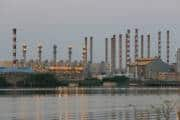
According to some market analysts, Iran is holding on to around 60 million barrels of crude which it targets to release in the international market once the sanctions are lifted.
Although Tehran's per-day production capacity would be restricted, the oil stored in its inventory can briefly halt the current price rally if the OPEC+ agrees to its expedited release in the market. The cartel has, over the past year, maintained a conservative approach but may permit relaxations to allow Iran to make up for the losses that it has accrued due to the crippling sanctions.
"Iran will be using its nearly 60 million barrels of crude inventory, of which 30-35 million barrels are built during the past two years, within a few months of sanctions removal," Reuters quoted Iman Nasseri, Managing Director for the Middle East with FGE consultancy, as saying.
While the likely release of inventory stock by Iran is expected to put downward pressure on benchmark global prices, the overall price trend would still be determined by the larger producers, claim commodity experts.
"The US, Saudi Arabia and Russia are the biggest producers and although the possibility of higher supply from Iran could create a headwind, it may not be enough to determine price trend," Rao observed.
"The current rally in crude oil is more because of expectations of demand recovery with improving virus situation so a sharp correction may come only if there are signs of demand getting impacted by virus concerns or higher prices," he added.
The Iranian regime had drawn attention towards its role in influencing the prices last month, after outgoing Oil Minister Bijan Zanganeh said on May 31 that the country would be increasing its per-production capacity to 6.5 million bpd -- the level at which it produced only in the 1970s.
Experts, however, disagree with the possibility of Iran being able to scale up its production any close to the above numbers in the near future.
"Iran cannot simply influence global prices in the short term and independently. Given that Iran’s oil production infrastructure is ageing and in need of replacement, a rapid ramp-up in production and related exports is currently unachievable. Moreover, sanctions have made it difficult for the Islamic Republic to obtain sophisticated equipment protected by US patents," Dr Sujata Ashwarya, Associate Professor, Centre for West Asian Studies, Jamia Millia Islamia University, told Moneycontrol.
"As a result, it will most likely take months, if not years, for Tehran to return to exports of 2 million barrels per day (bpd) in 2016 and 2.8 million bpd before sanctions in 2018. More recently, in April and May 2021, Iran’s exports were approximately 700,000 and 600,000 bpd, respectively, clearly far below what they were before the re-imposition of sanctions," she added.

The likely reduction in crude rates due to Iranian supplies - even though for a brief period - will come as a relief for consuming third-world countries like India where the domestic fuel rates have been climbing sharply on account of the recovering global prices.
Since the start of this year, the cost of petrol in India has climbed by over Rs 11 per litre, whereas, diesel has surged by closed to Rs 12 per litre in the same period.
Considering that the fuel prices are linked to the 15-day rolling average of international benchmark rates, any reduction in the global crude prices is expected to decelerate the domestic rates as well.
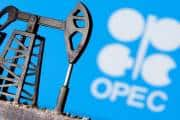
Crude prices have rallied by nearly 34 percent this year despite the risk of virus mutants derailing the fragile recovery in demand. This, claim analysts, is largely the result of the deliberate gradual release of oil by OPEC+, combined with resurgent demand and economic recovery due to vaccine rollout and government stimulus.
The output was cut by a massive 9.7 million bpd last year, but subsequent additions have restored 4 million bpd of the slashed amount.
The cartel of oil-producing nations is unlikely to relent from its prudent approach. The fear of another wave of infection in large markets such as India has solidified their plan to release more oil slowly over the next few months, experts suggest.
"The possibility of Iran resuming oil exports if it achieves a new nuclear deal with the US also provides another reason for the group to proceed cautiously," Ashwarya said.
As demand recovers in the coming months, OPEC+ is expected to release more oil into the market, but with an eye on prices, she added.
OPEC’s age-old mantra keeps prices balanced at a level that provides break-even revenues to producers while charging reasonable prices to consumers, ensuring that oil remains firmly in their primary energy consumption.
"When Iran resumes average production rates, it will be required to adhere to OPEC+ quotas to prevent prices from plummeting precipitously, which is also in the country’s best interests given that oil exports are the Islamic Republic’s key source of revenue," Ashwarya said
Iran's crude inventory stock is also expected to be released into the market in a staggered fashion to keep prices stable and respond effectively to an upward tick in demand, the professor added.
According to Rao, however, OPEC may show some flexibility in the case of Iran, as it has exhibited in the past.
"In the last few years, Iran has been given special treatment as its supply has been impacted severely by US sanctions. If the sanctions are lifted, OPEC may give Iran some room to get the output at more normal levels. However, once the situation normalises, Iran may also become subject to production targets," the commodities market expert added.

The benchmark prices were up following Iran's presidential poll results, which a section of experts attributed to the likely delay in finalisation of nuclear accord due to the victory of "hardliner" Ebrahim Raisi.
Raisi, serving as the chief of Iran's judiciary till his election as the head of the Iranian civil government, was already under US sanctions for his alleged role in extrajudicial executions. With a president who is under the sanctions himself, the pace of negotiations was expected to be hit.
According to Rao, the crude market would shift its focus to other factors if the US-Iran talks are further dragged.
"The sustained rally in crude oil shows that market players are not hopeful of an imminent deal. Already there have been multiple rounds of negotiations while uncertainty has risen further post-Iranian elections. Any further delay may not have much impact on prices and market focus may shift to other factors," he said.
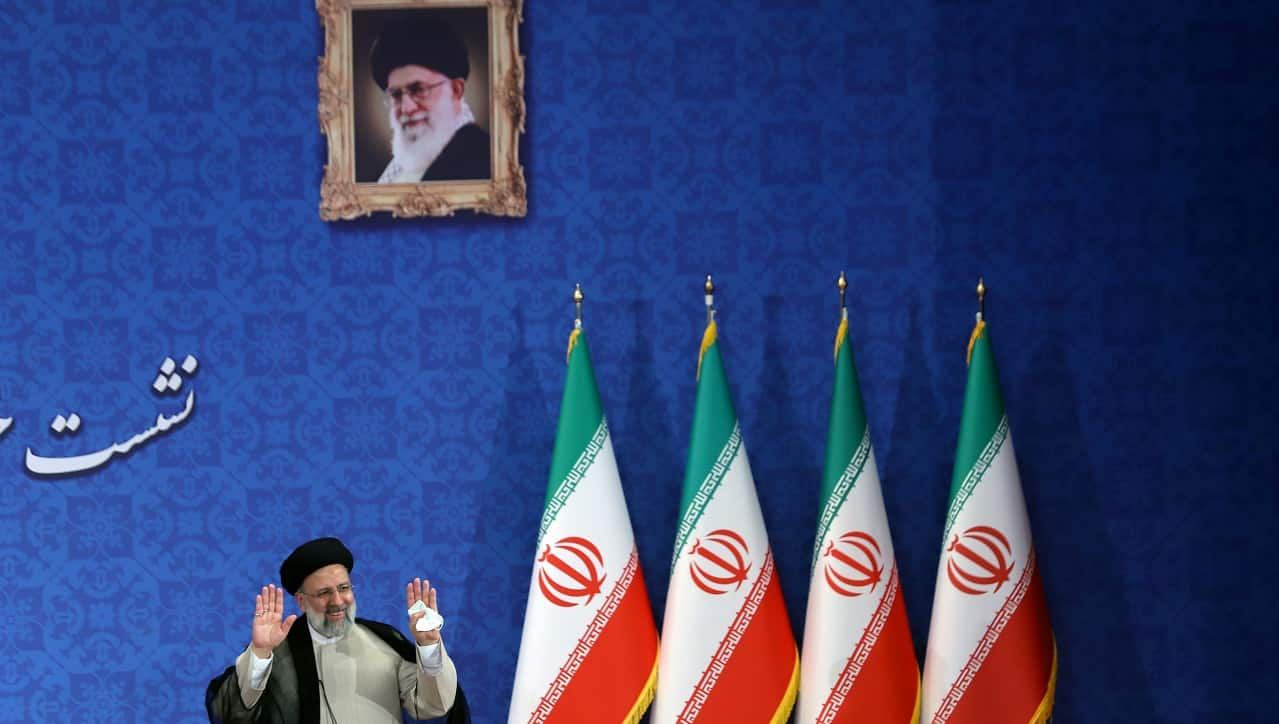 Iran's President-elect Ebrahim Raisi gestures at a news conference in Tehran, Iran June 21, 2021. Majid Asgaripour/WANA (West Asia News Agency) via REUTERS
Iran's President-elect Ebrahim Raisi gestures at a news conference in Tehran, Iran June 21, 2021. Majid Asgaripour/WANA (West Asia News Agency) via REUTERSA section of experts, however, claim that Raisi's election may instead expedite the finalisation of nuclear accord as the former chief justice is considered close to Supreme Leader Ayatollah Ali Khamenei.
"Raisi’s victory effectively aligns the executive with other state institutions such as the parliament, judiciary, and IRGC (Islamic Revolutionary Guards Corps), increasing the likelihood that a nuclear deal will pass muster without the political wrangling and internecine conflict that characterise Iran’s political system," Ashwarya said.

China, considered to be rapidly replacing Russia as the US' top geopolitical rival, is believed to be a hidden factor in the Tehran-Washington negotiations.
Before the talks gained pace in Vienna, Iran began increasing its per-day production - owing to the increased demand for its crude from Beijing. Between November 2020 and March 2021, the Islamic Republic supplied 557,000 bpd of crude to China, Reuters reported citing trade sources.
The Iranian supplies peaked to 703,000 bpd in April, but steeply dropped in May due to slow intake from Chinese independent refiners, a trade source told the news agency.
Iran, in general, does not release figures and often employs methods and means to conceal the origin of its cargoes to avoid sanctions.
Experts suggest that the Iranian exports to China, combined with the "25-year trade and security cooperation agreement" announced by the two nations, is a calibrated strategy to strengthen the country's bargaining position against the US.
"One of the reasons Iran has been able to avoid US sanctions is because of Chinese oil imports," Ashwarya said, adding that the country aims to increase crude exports to China through the trade and security pact.
Although the precise terms of the deal have not yet been made public, it appears that in exchange for greater access to Iranian oil, China has pledged assistance and investment in Tehran’s non-renewable and renewable energy sectors, including nuclear power, she added.
"However, I believe that the China-Iran 25-year cooperation agreement is more for show than substance and likely to strengthen Iran’s bargaining position in the nuclear talks. The specifics of what it would entail are lacking speaks volumes about the agreement’s true intent," the professor further said.
What further suggests China's wildcard role in the oil sanctions imbroglio is the timing of the trade deal announcement. The pact came into being around the same time that the new US administration headed by Joe Biden began pursuing Tehran’s compliance with the JCPOA and exhibited its intent to possibly revive the agreement.
Read more weekly in-depth articles from Moneycontrol here